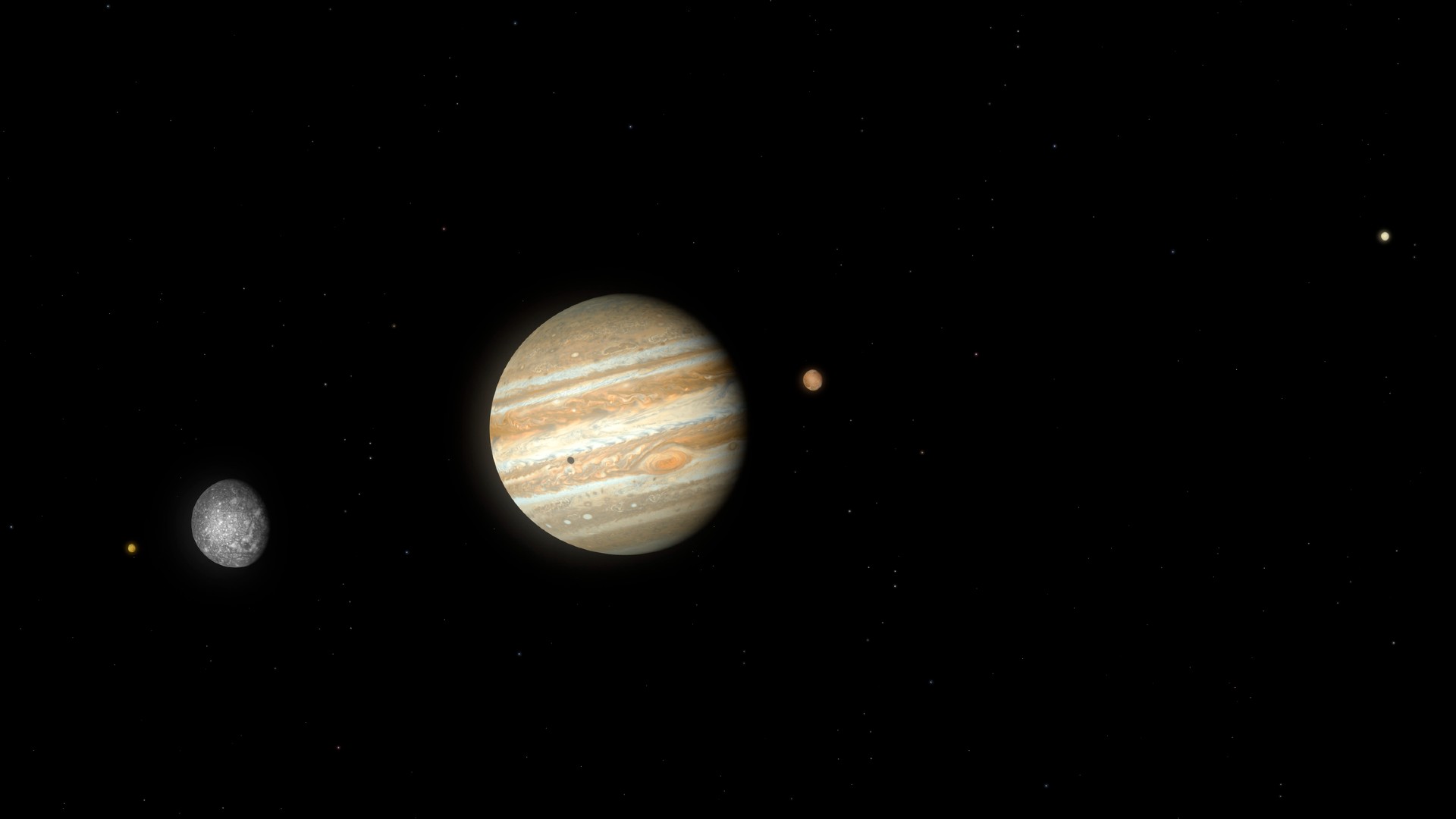New auroras detected on Jupiter's four largest moons
The auroras can be seen as they sit in the shadow of Jupiter.

Astronomers have discovered new auroras over Jupiter's four largest moons: Io, Europa, Ganymede, and Callisto, observable at visible wavelengths. The new auroras reveal in greater detail the composition of the thin atmospheres of these Jovian moons, including traces of oxygen and sodium, but only minimal water vapor.
The team made the discovery while observing the moons as they sat in the shadow of Jupiter, the solar system's largest planet, using the Keck Observatory's High-Resolution Echelle Spectrometer (HIRES) as well as high-resolution spectrographs at the Large Binocular Telescope and Apache Point Observatory.
The use of Jupiter's shadow as a sunshade allowed the scientists to see the faint auroras, caused by Jupiter's powerful magnetic field without them being overwhelmed by bright sunlight reflected from the surface of the Galilean moons, named this because they were discovered by Galileo Galilei in the 1600s.
Related: Photos: The Galilean Moons of Jupiter
"These observations are tricky because, in Jupiter's shadow, the moons are nearly invisible," the lead author of one paper documenting the team's findings and California Institute of Technology professor Katherine de Kleer, said in a statement. "The light emitted by their faint auroras is the only confirmation that we've even pointed the telescope at the right place."
The four Galilean moons all possess oxygen auroras the same as can be seen in the sky over Earth around our planet's poles. Yet, because gases on the Jovian moons are much thinner than on Earth, these auroras glow in deep red rather than the familiar green glow seen over Earth.
On the moons Europa and Ganymede, which is the solar system's largest moon and bigger than the planet Mercury, oxygen auroras are also visible in infrared wavelengths, just outside the red end of the electromagnetic spectrum, and thus can't be seen with the human eye. This is the first time this particular phenomenon has been seen in the atmosphere of a celestial body other than our own planet.
Breaking space news, the latest updates on rocket launches, skywatching events and more!
The aurora of Io is striped with a wide range of colors, likely arising from the fact that this Jovian moon is considered the most volcanically active body in the solar system. As a result of this violent volcanism, plumes of gas and dust are launched from Io's surface, reaching altitudes of hundreds of kilometers.
These plumes contain salts like sodium chloride and potassium chloride, which break down to produce additional colors in Io's auroras. The range of colors includes a yellowy-orange glow that comes from sodium and an infrared aurora caused by potassium which has never been detected anywhere else.
"The brightness of the different colors of aurora tell us what these moons' atmospheres are likely made up of," said de Kleer said in the statement. "We find that molecular oxygen, just like what we breathe here on Earth, is likely the main constituent of the icy moon atmospheres."
A lack of water vapor
Currently, scientists think that the three Galilean moons furthest from Jupiter, Callisto, Ganymede, and Europa, feature oceans of liquid water beneath their thick icy surfaces. There is also evidence that water in the atmosphere of Europa, believed to have twice as much water as Earth, may come from its sub-surface ocean or liquid reservoirs within its ice shell.
The team's observations have revealed only minimal traces of water vapor, a result that may impact the ongoing debate in astronomy of whether the atmospheres of the Jovian moons are rich with water molecules.
Jupiter's magnetic field is titled meaning that the brightness of the auroras of the Galilean moons changes as the gas giant rotates. Additionally, the atmospheres of the moon react as the moons lose exposure to warm sunlight as they slip into the massive planet's shadow. The team was able to observe these changes, thus painting a more complete picture of the atmospheres of the Galilean moons.
"Io's sodium becomes very faint within 15 minutes of entering Jupiter's shadow, but it takes several hours to recover after it emerges into sunlight," Boston University professor of astronomy and lead author of the second paper, Carl Schmidt, said. "These new characteristics are really insightful for understanding Io's atmospheric chemistry. It's neat that eclipses by Jupiter offer a natural experiment to learn how sunlight affects its atmosphere."
The team's research is documented in two papers published in The Planetary Science Journal.
Follow us @Spacedotcom, or on Facebook and Instagram.

Robert Lea is a science journalist in the U.K. whose articles have been published in Physics World, New Scientist, Astronomy Magazine, All About Space, Newsweek and ZME Science. He also writes about science communication for Elsevier and the European Journal of Physics. Rob holds a bachelor of science degree in physics and astronomy from the U.K.’s Open University. Follow him on Twitter @sciencef1rst.

